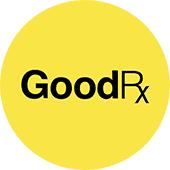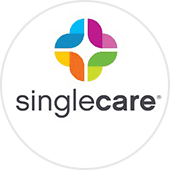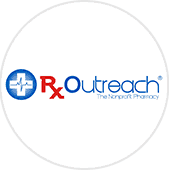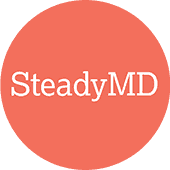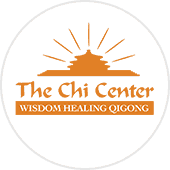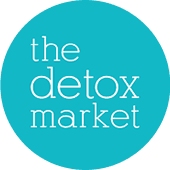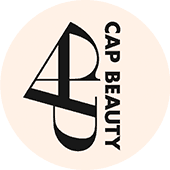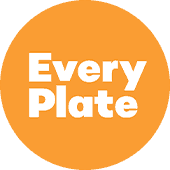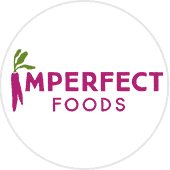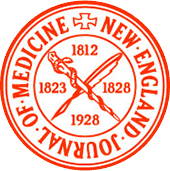The Dye Hard Truths
If you’ve been to nearly any grocery store lately, you may have noticed the trend in packaged food companies offering “dye-free” alternatives to many popular foods. From popsicles and fruit snacks to candy and yogurts– consumers are asking for other options to their favorites that don’t contain artificial food dye–and companies are starting to listen.
As a parent, seeing these options available more than ever before is refreshing. Artificial food dye has been slowly creeping into our food for the past 50 years, and people are starting to notice the harmful side effects. Brightly colored food is easy to spot on the grocery shelves. However, there is much more to artificial coloring than meets the eye. Today, we will dive into the dangers of artificial food dye and highlight the benefits of a dye-free lifestyle. You will also learn some surprising places where colors are lurking.
What Is Artificial Food Dye?
Artificial food dye is a synthetic way to add vibrant color to a product, especially food. Dyes have no nutritional value. Instead, they are comprised of various chemicals often derived from petroleum. Red 40 is among the most popular color additives and arguably the most harmful, especially in children.
Unlike removing gluten and dairy, artificial coloring can get complicated, as it is not just one ingredient to eliminate. In addition to reds are blues, greens, yellows, oranges, and others, all of which can go by several names. Most are synthetic and can be found by looking at the ingredient list on the back of a food package. Generally, the coloring appears last or at the bottom of the list and consists of a color and number. For example:
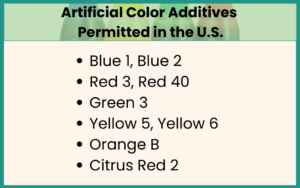
Sometimes, dyes are listed simply as “artificial colors” rather than individually, or they may even go by their commercial names, which may not indicate a color or number at all, adding to the confusion. Some of the commercial names for these artificial additives are:
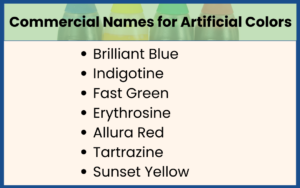
The Dangers of Artificial Dyes
Going completely “dye-free” is a lot of work, so it’s important to know if food dyes are as harmful as people claim. Is all the buzz about the adverse effects of artificial colors true? The truth is that the use of dyes is a very controversial topic. Some believe they are toxic and harmful, while others think they’re safe.
Numerous studies have raised serious questions about the potential health risks associated with artificial colors. Adding to the controversy is that many countries have banned these ingredients from being added to the foods on grocery store shelves while others have not. Some countries have added warning labels in lieu of prohibiting them, much like alcohol and tobacco.
In the U.S., nine artificial dye additives remain in our foods without warning labels despite some efforts to ban them altogether. Does that mean they’re safe to consume?
Ask any parent who has removed artificial coloring from their child’s diet for a few days and has seen firsthand its effects if the ingredients are harmful enough to warrant a ban. They will likely shout it from the mountaintops to share what they know.
It is not only kids who see the effects of a dye-free lifestyle. The symptoms and severity can vary from person to person, and genetics can also come into play, but here are some of the possible side effects of consuming artificial coloring:
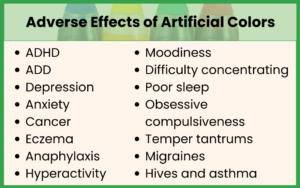
If you’re curious whether your child (or anyone in your family) has a dye allergy or sensitivity, start by eliminating all dyes from your diet for at least a week or two. Then, reintroduce them back in slowly to see if any of the adverse side effects return. A functional medicine doctor can be an excellent resource to help you with your health goals. They can help you uncover the root cause of your symptoms and guide you on your dye-free journey.
More Than Meets The Eye
If you’re eager to try cutting out artificial food dye from your diet, you’ll have to do more than simply skip those neon yellow sports drinks or brightly colored cereals and candy. Oddly, coloring agents are for more than just adding color to your food. You read that correctly. Artificial colors can be added for other reasons, like enhancing existing colors and acting as a preservative to color-less foods (even white food!) to keep them shelf-stable. Here are a few foods you may never have expected to include artificial coloring:
- Marshmallows – Blue 1 keeps marshmallows white and shelf stable. While dye-free options are available, most standard marshmallow brands choose the dyed kind.
- Cheese – Orange cheese almost always contains an artificial color. When the choice presents itself, remember: white cheddar is always better!
- Pickles – Check those ingredients. Pickles are often dyed to maintain that bright green color we see on the shelves.
- Gum – Most gum contains at least one kind of dye, but dye-free options are available.
- Cereal – Those brightly colored cereals we see know just how to draw us in. But check them all because dyes are a known additive.
- Soda – Soda, even brown soda, is almost always dyed to give it color.
- Fruit – Artifical dye in fresh fruit is probably the most disappointing of all. See those bright, juicy oranges? Lush red strawberries? Shiny red apples? While not all fruit is dyed, many are to keep their colors appealing to consumers. Opt for organic fruit to avoid dyes.
- Fish – Love salmon or tuna? Those brightly colored fish aren’t always so bright in color. Color is added to them to appeal to consumers.
- Hotdogs – Hotdogs and sausage casings are among the only foods approved for using Orange B for color.
- Vitamins – If your vitamins contain color, especially those gummies targeting children, be cautious of the ingredient list.
- Sauces and Condiments – Unfortunately, you’ll need to check all the labels because even your pantry staples could be hiding artificial colors, too.
Beyond Food
Artificial dyes are not limited to just the food we eat. Dyes can be found almost everywhere- in our cosmetics, clothing, and even our skin products. While some people only react negatively to artificial dyes when consumed in foods, many are sensitive when they come into contact with dyes on their skin. Toothpaste, hand soap, laundry detergent, colored clothing, shampoos, and even children’s medicines are often colored with artificial dyes.
The good news, however, is that if you intentionally check labels, you will be able to find dye-free alternatives for almost everything. Some health food stores are dedicated to only selling dye-free food and products on their shelves, so you never need to worry about reading labels when you shop there. You can often find a statement on their company website to know for sure. Thankfully, so many companies are plastering their “dye-free” labels where they can be easily seen because they understand how important that information is.
Natural Alternatives
If we can accept that food doesn’t need to be neon and overly vibrant, then we can live without artificial colors in our food. Nature has provided us with more than enough color if we know where to look. Plant-based food dyes are increasing in popularity for companies that rely on color in their foods. Carrots, blueberries, turmeric, beets, pomegranates, paprika, and spinach are just a few healthy and natural alternatives that will change the color of your food without the side effects.
Final Thoughts
Now that you’ve got the information, you can make an informed decision about artificial colors for yourself and your family. Options and alternatives to artificial food dye are everywhere nowadays, and if you decide to eliminate dyes from your diet, you likely will never miss them.
At Knew Health, we wholeheartedly support our Members’ dye-free lifestyles with health coaching, functional medicine consultations, and access to discounted organic and dye-free foods. To get started, call us at 855-542-0050 or schedule an appointment with one of our knowledgeable Care Team Members, who can answer your questions about how we can support your healthy lifestyle.
It’s never been easier to live dye-free.
Disclaimer:
This information is being provided to you for educational and informational purposes only. It is being provided to educate you about how to take care of your body and as a self-help tool for your own use so that you can reach your own health goals. It is not intended to treat or cure any specific illness and is not to replace the guidance provided by your own medical practitioner. This information is to be used at your own risk based on your own judgment. If you suspect you have a medical problem, we urge you to take appropriate action by seeking medical attention.
Sources:
“Artificial Colors.” Bakerpedia, bakerpedia.com/ingredients/artificial-colors/.
Bell, Becky MS, RD. “Food Dyes: Harmless or Harmful?” Healthline, 7 Jan. 2017, www.healthline.com/nutrition/food-dyes.
“Is Red Dye 40 Safe?” Cleveland, 8 Mar. 2023, health.clevelandclinic.org/red-dye-40/.
Potera, Carol. “DIET AND NUTRITION: The Artificial Food Dye Blues.” National Library of Medicine, 1 Oct. 2010, www.ncbi.nlm.nih.gov/pmc/articles/PMC2957945/.
Tsakos, Lisa. “What Are Artificial Colors?” Naturally Savvy, naturallysavvy.com/eat/what-are-artificial-colors/.






